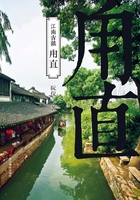
概况
江南水乡主要是指长江下游南面的苏南、浙北一带地区。这里土地肥沃、气候温和、物产丰富,自古就有先民在此聚居,千百年来,逐渐形成了许多村落和乡镇。这些乡镇依河而建,因水成街,因水成市,形成了精巧独特的建筑布局,镇上粉墙黛瓦,小桥流水,老街深巷,洋溢着浓郁的江南乡土气息,构成了一种独特的地域文化景观。因地理人文环境的差异,各镇又各有自己的特色。20世纪80年代以来,中国农村经济迅速发展,大多数历史古镇经历了现代建设的改造,基本失掉了原来的风貌。值得庆幸的是,浙江省的乌镇、南浔、西塘和江苏省的周庄、同里、甪直等古镇得到了及时的保护。近年来,这些古镇又在专家的指导下进行了合理的整治,较完整地保存了原汁原味的历史风貌,成为人类珍贵的文化遗产。
甪直,属苏州市吴中区。传说古代独角兽名甪端,恋此地风光而栖居于此,故得名。“甪”字不常见,古镇富魅力。在上海、苏州这些大城市近郊的古镇中,她葆有古朴优美的风貌。
甪直河多、桥多,名胜古迹多,文化遗产多。老镇境内河港纵横,清洌的河水将两旁的古街衬托得生动活泼,店招飘摇,廊檐靠椅,黛瓦粉墙,石板小径,尽显水乡风韵。
古镇因唐代就建有的保圣寺而兴盛,寺内藏有的九尊古代罗汉像现为国家级文物保护单位。镇上还有唐代著名诗人陆龟蒙的斗鸭池和他的坟茔,古树枯草留人凭吊。著名教育家、文学家叶圣陶早年曾在此任教,著有小说名篇《多收了三五斗》,被选入统编语文课本,人人知晓。镇上有课文中的万盛米行等可供人体味。近代教育家沈柏寒宅、文化名人王韬老宅、香港艺人萧芳芳祖居萧宅,都是保存完好的典型江南大宅。
甪直镇上妇女传统服饰具有浓郁的水乡特色,花头巾、花小袄、束腰作裙、百纳绣鞋等,独具风韵,为古镇增添了一抹亮色。

主要景点:保圣寺及古代罗汉像、斗鸭池、叶圣陶纪念馆、沈宅、萧宅、王韬纪念馆、万盛米行、水乡农具博物馆、古石桥、沿河水埠、系船石、水乡服饰。
The Canal Towns in Jiangnan Area mainly refer to the old towns which lie at the lower reaches of the Yangtze River in the south of Jiangsu Province and north of Zhejiang Province, and endowed with fertile land, mild climate and rich produce, this area was inhabited by primitive people many thousand years ago. Natural villages and towns have formed along small rivers, comprising exquisitely unique architectural layout. The towns feature white walls and dark tiles, small bridges and streams, old streets and long lanes. Local color constitutes a unique regional cultural landscape. These towns vary in style due to different geographic and cultural environments. Since 1980s, most of the ancient towns have been modernized with the takeoff of China's rural economy, losing the original framework. Fortunately, Luzhi, Zhouzhuang and Tongli in Jiangsu Province and Nanxun, Wuzhen and Xitang in Zhejiang Province have been timely preserved. In recent years, these old towns have been renovated under the guidance of experts. With original historic features, they are becoming the common heritage of our human race.
Luzhi, where a unicorn is said to have been attracted to stay, is situated in the east of Suzhou. This is an ancient township in a graceful classical style near Shanghai.
The ancient town abounds in rivers, bridges, scenic wonders, and cultual relics. The crisscross rivers make the ancient streets alive with shop signs, roofed chairs, tiles and walls, slabs and paths.
The town was prosperous because of Baosheng Temple built in the Tang Dynasty, where we find national treasures in nine sculpturds of arhats. There is also Tang poet Lu Guimeng's Duck-Fight Pond and tomb. Distinguished educatoir and writer Ye Shengtao taught here in his early years and wrote his short story "Three or Five Dou of Grain OverCollected", which was included in China's nation-wide schoolbook and thus known to everybody. You can still find the Wansheng Rice Shop described in the textbook. Also well preserved are typical Southern-styles homes, such as modern educator Shen Baihan's home, cultural celebrity Wang Tao's home, Hong Kong artist Xiao Fangfang's ancestral home.
The local traditional lady garments feature a rich water town flavor:
the kerchiefs and dresses, working skirts, and embroidered shoes are unique treats for the curious eye.
Major places of interest: Baosheng Temple with Its Arhat Sculpturds,
Duck-Fight Pond, Memorial to Ye Shengtao, Shen's Home, Xiao's Home, Memorial to Wang Tao, Wansheng Rice Shop, Museum of Water Town Farm Tools, Ancient Stone Bridges, River Wharfs, Ship Moorings, Water Town Garments.